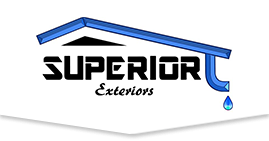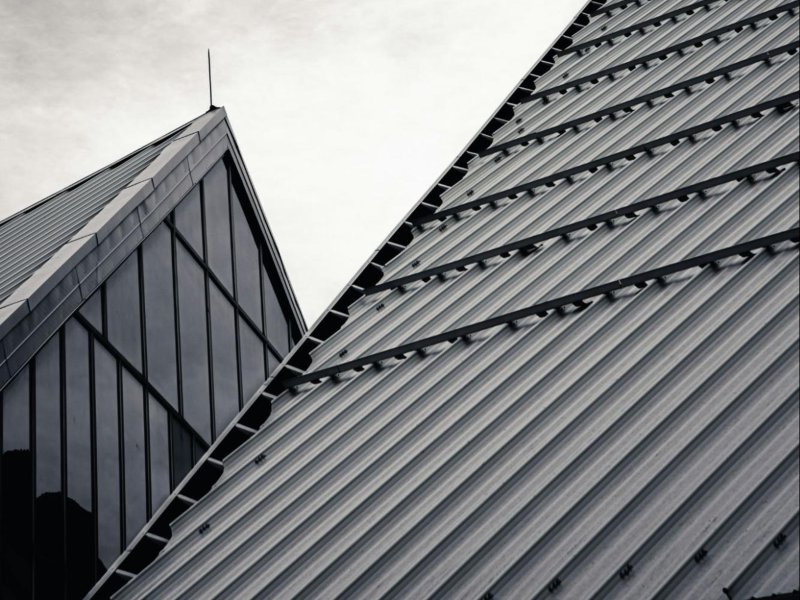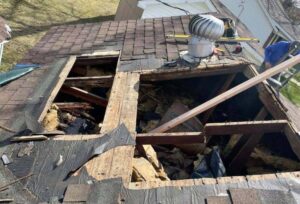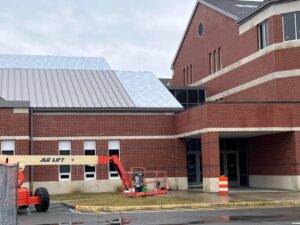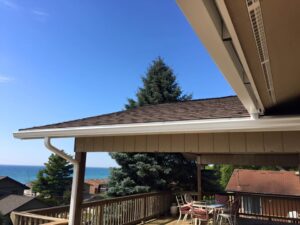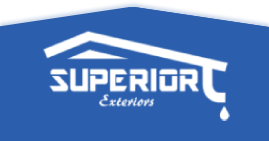In the realm of sustainable building practices, metal roofing emerges as a shining example of eco-friendly elegance. Not only does metal roofing offer durability, longevity, and aesthetic appeal, but it also aligns with environmentally conscious principles. From the materials used in production to the energy efficiency of the installed roof, the entire lifecycle of metal roofing can contribute to a more sustainable and green approach to construction. In this comprehensive guide, we will explore the eco-friendly aspects of metal roofing installation, including the choice of materials, energy efficiency, recyclability, and the overall environmental impact.
Choosing Sustainable Materials
a. Recyclability of Metal Roofing Materials:
- Eco-Friendly Aspect: One of the key environmentally friendly attributes of metal roofing lies in the recyclability of the materials. Most metal roofing materials, including steel and aluminum, are highly recyclable. This means that at the end of their long lifespan, metal roofing materials can be recycled into new products, reducing the demand for virgin resources.
- Energy Savings: The recycling process for metals typically requires less energy compared to the production of new materials. By choosing recycled metal roofing materials, homeowners and builders contribute to energy savings and a reduction in the environmental impact associated with resource extraction and manufacturing.
b. Lightweight Nature of Metal Roofing:
- Eco-Friendly Aspect: Metal roofing is known for its lightweight nature, which has several eco-friendly implications. The lightweight design reduces the structural load on buildings, allowing for the use of lighter framing materials. This can lead to overall energy savings during the construction phase.
- Energy Savings: The reduced weight of metal roofing materials can contribute to lower transportation energy costs. Lighter roofing materials require less fuel for transportation, resulting in decreased carbon emissions associated with the delivery of materials to construction sites.
Energy Efficiency in Metal Roofing Installation
a. Cool Roofing Technology:
- Eco-Friendly Aspect: Metal roofing often incorporates cool roofing technology, which is designed to reflect more sunlight and absorb less heat than traditional roofing materials. This reflective property helps in maintaining lower roof temperatures, reducing the need for air conditioning and contributing to overall energy efficiency.
- Energy Savings: The cooling effect of metal roofing can result in energy savings for homeowners, especially in regions with warm climates. By reducing the heat absorbed by the roof, cool roofing technology can lower indoor temperatures, leading to decreased reliance on air conditioning systems.
b. Insulation Compatibility:
- Eco-Friendly Aspect: Metal roofing is compatible with various insulation materials, allowing homeowners to enhance energy efficiency by improving thermal performance. Adequate insulation reduces the need for heating in colder climates and cooling in warmer climates, resulting in lower energy consumption.
- Energy Savings: Properly insulated metal roofs contribute to energy savings by maintaining more stable indoor temperatures throughout the year. This reduces the demand for heating and cooling systems, resulting in lower energy bills and a smaller carbon footprint.
Longevity and Durability of Metal Roofing
a. Extended Lifespan:
- Eco-Friendly Aspect: Metal roofing is renowned for its exceptional durability and longevity. Many metal roofs have a lifespan of 50 years or more, surpassing the lifespan of traditional asphalt shingle roofs. The longevity of metal roofing materials reduces the frequency of replacements, minimizing the environmental impact associated with producing and disposing of roofing materials.
- Resource Conservation: The extended lifespan of metal roofing contributes to resource conservation by reducing the need for frequent roof replacements. This is in contrast to traditional roofing materials that may require replacement every 20 to 30 years, leading to more significant resource consumption over time.
b. Resistance to Environmental Elements:
- Eco-Friendly Aspect: Metal roofing is resistant to various environmental elements, including fire, mildew, and pests. The resistance to these elements not only ensures the longevity of the roof but also reduces the need for chemical treatments or replacement materials that might have a more significant environmental impact.
- Chemical-Free Maintenance: The minimal maintenance requirements of metal roofing contribute to its eco-friendly profile. Without the need for chemical treatments or frequent repairs, homeowners can enjoy a durable and resilient roofing solution with fewer environmental consequences.
Water Collection and Harvesting Opportunities
Along with resistance to environmental elements, having a metal roof also presents opportunities with rainwater opportunities. According to our friends at Innovative Water Solutions, these opportunities include:
a. Rainwater Harvesting Potential:
- Eco-Friendly Aspect: Metal roofing is conducive to rainwater harvesting due to its smooth and impermeable surface. Rainwater can be collected and stored for various non-potable uses, such as irrigation, gardening, or even flushing toilets. This practice reduces the demand for treated municipal water for certain applications.
- Water Conservation: By harnessing rainwater, homeowners can actively contribute to water conservation efforts. Rainwater harvesting aligns with sustainable practices, especially in regions facing water scarcity or drought conditions, by utilizing a local and renewable water source.
Recycling at the End of Life
a. Recyclability of Metal Roofing:
- Eco-Friendly Aspect: When a metal roof reaches the end of its life, the materials can be recycled rather than sent to a landfill. The recyclability of metal roofing materials reduces the environmental impact associated with waste disposal and the extraction of new resources.
- Closed-Loop Recycling: Metal roofing materials can undergo closed-loop recycling, where they are recycled into the same type of product. This closed-loop process further conserves resources and minimizes the ecological footprint of the roofing material.
Installation Practices and Eco-Friendly Certifications
a. Sustainable Installation Practices:
- Eco-Friendly Aspect: The installation of metal roofing can be carried out using sustainable practices. This includes minimizing construction waste, recycling materials on-site, and adhering to energy-efficient construction methods. Contractors can also employ environmentally conscious practices during the installation process.
- Energy Efficiency during Installation: Sustainable installation practices contribute to overall energy efficiency. By minimizing waste and optimizing construction processes, the environmental impact associated with the installation phase is reduced.
b. Eco-Friendly Certifications:
- Eco-Friendly Aspect: Homeowners can choose metal roofing products that have received eco-friendly certifications. These certifications, such as ENERGY STAR or LEED (Leadership in Energy and Environmental Design), indicate that the roofing materials meet specific environmental performance criteria.
- Consumer Confidence: Certifications provide consumers with confidence in the environmental attributes of the chosen roofing materials. Homeowners seeking a green and sustainable roofing solution can use certifications as a guide in selecting products that align with their eco-conscious values.
Conclusion
Metal roofing installation, when approached with eco-friendly principles, can seamlessly blend elegance with sustainability. From the choice of recyclable materials to energy-efficient properties, the entire lifecycle of metal roofing contributes to a greener approach to construction. Homeowners embracing metal roofing benefit not only from its durability and longevity but also from its potential for energy savings, rainwater harvesting, and minimal environmental impact.
As the construction industry prioritizes sustainability, metal roofing is a shining example of how elegance and eco-friendliness coexist. By making informed choices during material selection, installation practices, and considering the entire lifecycle of the roof, homeowners can contribute to a more sustainable built environment while enjoying the enduring beauty of their metal roofs. Eco-friendly elegance in metal roofing installation reflects a commitment to both style and environmental responsibility, paving the way for a greener and more sustainable future in construction practices.
